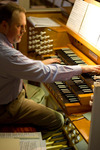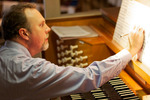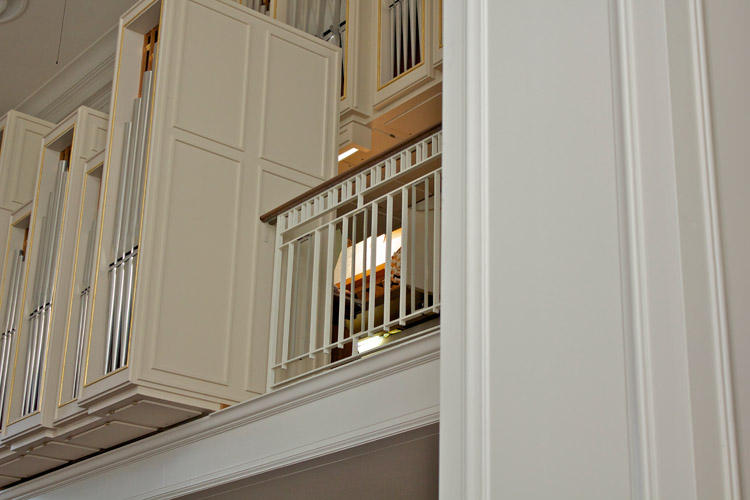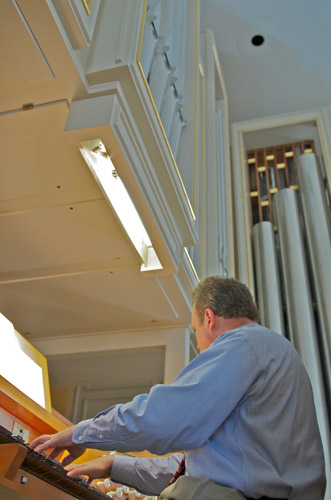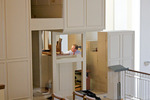Making Music City Mixture : Part III
 Wednesday, June 27, 2012 at 8:51PM
Wednesday, June 27, 2012 at 8:51PM Part 3 of a multi-part narrative of my new recording on mechanical action organs of Nashville. Music City Mixture is available here.
First Presbyterian Church
Church: http://www.FPCNashville.org/
Organ specifications: http://www.nashvilleago.org/AreaOrgans/Specs/FPCNashville.htm
Organ builder: http://www.Beckerath.com/
After practicing at St. Andrew’s on Sunday, it was off to First Presbyterian to register the Bobo Appalachian Prelude, the Rheinberger Sonata, and the Gawthrop Three Floral Preludes. I also roughed in the registrations for a few other pieces, in case any other organ proved to be un-recordable (none did). Here are some photos from practice sessions:
The First Presbyterian campus is a marvel of traditional Georgian architecture, handsomely situated on top of a huge, rolling hill. Rhonda Swanson, organist, extended the finest hospitality to me and was a complete delight to work with. She clearly loves the Beckerath organ and the congregation she serves and was very helpful with registrational and tuning issues. She also introduced me to the veritable gold mine of organ photos on Ken Stein’s website. Ken is a member of the Nashville AGO chapter, and he freely posts his photos for all to enjoy. You’ll find links throughout this blog series to many pages of his website. A must-see.
Also at First Presbyterian is a Casavant positif organ. The Froberger Canzona would have been perfect on that one, but alas, low A on the 8-foot was dead. Too bad – that would have been tasty icing on the recording’s cake. (The Froberger found its champion in the chapel at First Lutheran.)
The Beckerath is both a nightmare and pure joy. I have never encountered an organ that “draws” as much as this one does. Physics of sound for two pipes of the same pitch being installed very close to each other dictate that they might “draw” each other into tune – or out of it. So you can’t use principals and flutes of the same pitch from the same division together on this organ. The joy is that this organ is so richly voiced that you don’t need all those wind-robbing flutes in large ensembles – the organ fills the room beautifully with its pure principal choruses. Beckerath and similar builders know that; the drawing was probably just an added bonus toward ensuring success!
Another mild nightmare at First Presbyterian is in the piston layout. There are multiple memory levels but only six general pistons. The thumb pistons are spread quite far apart from each other, say, a couple inches or more. The general toe studs are located a bit too far to the left and are jumbled up rather than in the straight lines of the thumbs. And one of them didn’t work reliably – so that meant being able to trust only five toe generals. But the tonal finishing of this organ more than makes up for its somewhat eccentric console layout.
Another joy of the Beckerath is in how it lovingly envelops you in its arms. Literally. You sit among the divisions of the organ as a part of them. Above you is Great. In front of you is Swell. Behind you is Positif. To your right is Pedal. And to your left is the church choir.
You are truly wrapped up in music at this organ!
This organ had the steepest learning curve for registration – what sounds right at the console is probably not right in the room. Rich and I spent all day Thursday recording there. We had the Rheinberger Fantasia-Sonata, the Bobo Appalachian Prelude, and the third of the Gawthrop Three Floral Preludes to record. (I had prepared all three Gawthrop Preludes here and at Second Presbyterian. I preferred Second, but the third Prelude didn’t work there due to pilot error, which I will explain later.) We spent a good deal of time figuring out the “drawing” issues of the Beckerath and re-registering accordingly. As my “ears” out in the room, Rich was also able to inform me that this or that balance may sound great at the console but is overblown in the mikes. We also spent a good deal of time taking and re-taking some difficult notes in the Gawthrop that took advantage of my fatigue and decided to go AWOL.
I feel the final results on this organ are stunning. This organ takes its rightful place among the stars of the show. The Rheinberger, one of my favorite pieces, gets a loving but commanding rendition. And the third of the Gawthrop Floral Preludes is just good fun, as it should be. The various solo colors made the Bobo come alive, but alas, the CD did not have room for it. That was perhaps the most painful cut I had to make. Fortunately, it is here as a free bonus:
While I celebrate the beauty of all the instruments I worked on, this one has a special place for being so elegant in its versatility.
 Joby Bell | tagged
Joby Bell | tagged  Music City Mixture
Music City Mixture 
